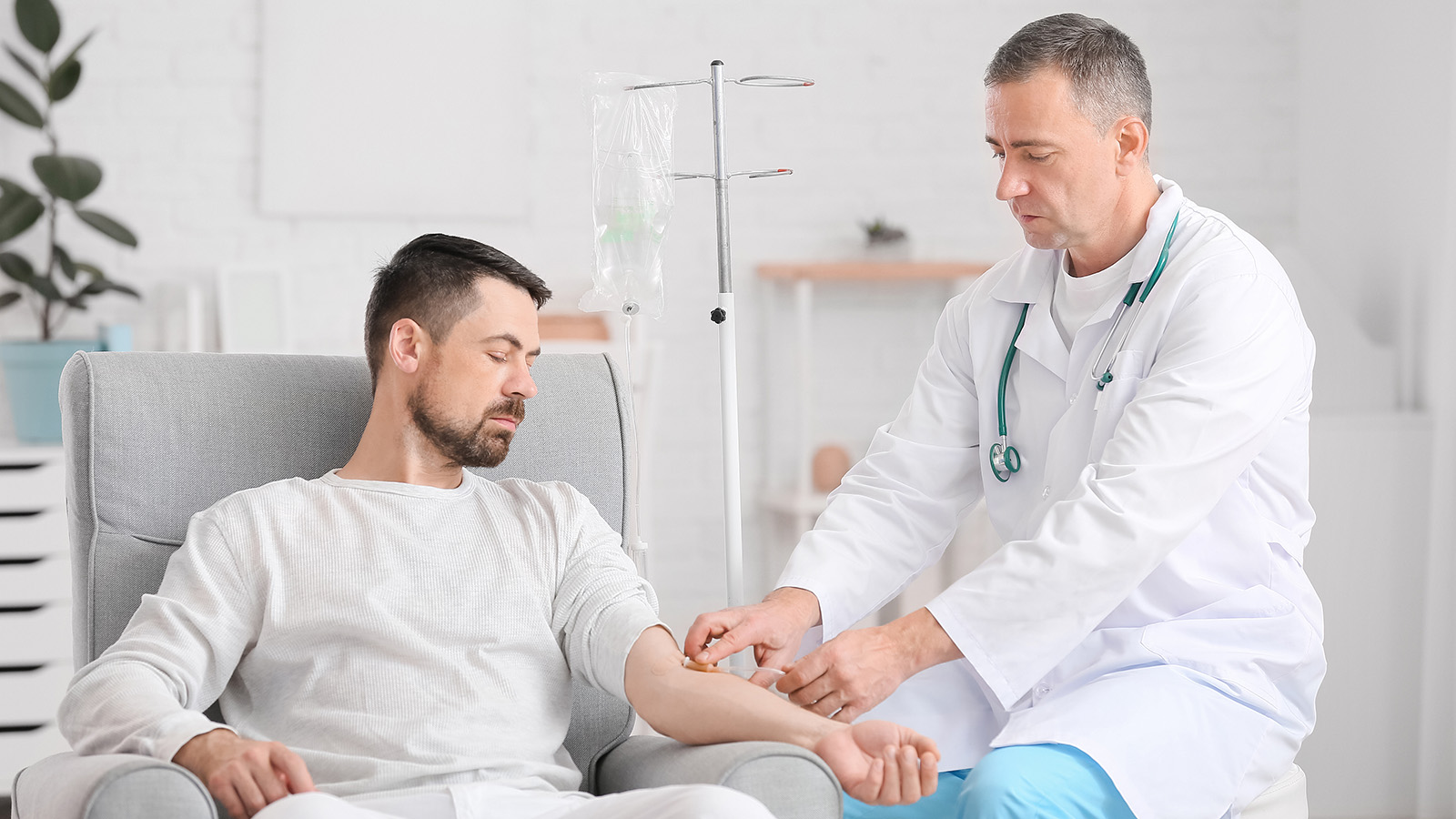Hodgkin lymphoma treatments

Learning as much as you can about Hodgkin lymphoma helps you play an active role in your treatment. This is an important part of successfully treating and managing your condition.
Hodgkin lymphoma is one of the most curable cancers, especially if it’s found early. Survival rates are usually looked at from the time the cancer was diagnosed. For example, a 5-year survival rate tells you what percent of people live at least 5 years after the cancer is found. The overall 5-year survival rate for people with Hodgkin lymphoma is 89 percent.1
Treatment for Hodgkin lymphoma depends on things like:
- The type and location of Hodgkin lymphoma
- What stage it’s in
- The chance that a type of treatment will work and possible side effects
- Your age and general health
- Your feelings about treatment options
You and your cancer care team will talk about the treatment plan that is best for you.
Chemotherapy
Treatment for Hodgkin lymphoma often includes chemotherapy (medications that fight cancer) followed by radiation.
Chemotherapy may need to be given intravenously (IV or into a vein). Or it may come in an oral form (taken by mouth). You might take a few different chemotherapies at the same time. The goal is for the medication to go through the body to find and fight any cancer cells. Chemotherapy is given in cycles. This means that you will receive chemotherapy for a certain period of time, take a break for a certain period of time, and then go back on. The cycles may go on for weeks or months.
Chemotherapy can have many side effects. Side effects may be different for each person, depending on the type of chemotherapy they get and how they tolerate it. Some side effects may include:
- Bruising or bleeding easily
- Diarrhea
- Feeling sick to your stomach and throwing up (nausea and vomiting)
- Feeling very tired (fatigue)
- Getting infections
- Losing your hair
- Losing your appetite
- Sores in your mouth
Most of the time, side effects will go away after your treatment cycles are done. There are ways to help manage most chemotherapy side effects. Talk to your cancer care team about how you are feeling and what side effects that you have.
Radiation
Radiation uses high-energy rays (like x-rays) to kill cancer cells. Radiation treatments usually mean going into a radiation center every day, Monday through Friday, for a certain number of weeks (usually 3 to 5 weeks) depending on what the doctor ordered.
Before you start radiation, your skin will be marked so the radiation is aimed just where it is needed. Radiation therapy usually works better when the lymphoma is only in one part of the body. The treatment only takes a few minutes, and you don’t feel anything during it. A lot of times, people still work, go to school, or do their normal activities while they are getting radiation therapy. But, it’s important to keep in mind to do only what you can and not push yourself too much.
Radiation therapy may have side effects. The side effects that you get depend on which part of the body is getting the radiation. The most common side effects of radiation are:
- Feeling very tired (fatigue)
- Redness or blisters on the skin where the radiation goes in.
Most side effects get better after treatment ends. Some side effects, however, may last a long time or may not show up until years later.
Other therapies
Stem cell transplants may be an option for Hodgkin lymphoma that doesn’t get better with chemotherapy and radiation. It’s also an option if the cancer comes back after the treatments. Stem cell transplantation is complicated. It’s very important to talk to your cancer care team and understand the pros and cons.
With a stem cell transplant, doctors use very high doses of chemotherapy to kill the Hodgkin cells. High doses also kill the normal cells being made in the bone marrow which can lead to serious complications like infection or bleeding until the bone marrow starts making the cells the body needs again.
Another type of medication that might be used is called monoclonal antibodies. These are medications that help the immune system fight the cancer cells by attacking Hodgkin lymphoma cells specifically. There are different monoclonal antibodies that work in different ways to kill the cells. Each one can cause side effects. So, it’s important to talk to your cancer care team and learn what you can expect.
We’re here to help
Your CVS Specialty® CareTeam is always available to answer your questions. They can also help manage side effects and help you stay on track to get the most from your treatment. If you want to learn more about your condition or treatment, talk to your doctor or contact your CareTeam.
-
1. National Cancer Institute. Cancer Stat Facs: Hodgkin Lymophoma, At-a-Glance, 2025. https://seer.cancer.gov/statfacts/html/hodg.html Accessed August 18, 2025.
This information is not a substitute for medical advice or treatment. Talk to your doctor or health care provider about your medical condition and prior to starting any new treatment. CVS Specialty assumes no liability whatsoever for the information provided or for any diagnosis or treatment made as a result.
CVS Specialty does not operate all the websites/organizations listed here, nor is it responsible for the availability or reliability of their content. These listings do not imply or constitute an endorsement, sponsorship, or recommendation by CVS Specialty.
Your privacy is important to us. Our employees are trained regarding the appropriate way to handle your private health information.
